Table of Contents
ToggleRunning a business is no small feat, and navigating the labyrinth of taxes can feel like trying to find a unicorn in a haystack. But fear not! With the right tax saving strategies, business owners can turn that daunting task into a treasure hunt. Imagine keeping more of your hard-earned money instead of watching it vanish into the tax abyss.
Understanding Tax Saving Strategies for Business Owners
Business owners can implement various strategies to reduce tax liabilities. One effective method involves structuring the business as an S corporation, which allows for pass-through taxation. This approach minimizes double taxation on corporate income, leading to increased savings.
Utilizing deductions provides another opportunity. Expenses such as office supplies, travel costs, and employee salaries can be deducted from taxable income. Keeping meticulous records of these expenditures aids in maximizing the claimed deductions.
Investing in retirement plans stands out as a beneficial strategy. Contributions to plans like a 401(k) or SEP IRA not only build a retirement fund but also reduce taxable income for the current year. This dual benefit enhances financial planning for business owners.
Moreover, taking advantage of tax credits can significantly lower tax obligations. Various credits, including those for research and development, employee hiring, and renewable energy, provide direct reductions on tax bills. Each credit has specific eligibility criteria, so awareness of these factors is crucial.
Business owners also benefit from strategic timing of income and expenses. Deferring income to the next tax year while accelerating expenses can create significant short-term tax savings. This strategy allows owners to manage their tax bracket effectively.
Lastly, consulting a tax professional proves invaluable. Experienced tax advisors can tailor strategies based on unique business needs. They keep owners informed about changes in tax laws and identify potential savings that may not be immediately apparent.
Common Tax Deductions

Tax deductions help business owners reduce their taxable income. Understanding these common deductions enhances tax-saving strategies.
Business Expenses
Business owners can deduct various operating expenses. Costs such as office supplies, software subscriptions, and marketing campaign expenditures qualify. Expenses related to research and development can also reduce taxable income. Travel costs for business trips, including airfare and lodging, are deductible. Meals with clients, limited to 50% of the expense, may also fall under deductible business expenses. Accurate record-keeping simplifies claiming these deductions. Tracking receipts and maintaining organized financial statements keeps the records clear.
Home Office Deduction
The home office deduction offers significant savings for business owners working from home. Deductible costs include a portion of rent or mortgage interest, utilities, and internet expenses. This deduction requires exclusive use of a designated space for business activities. Calculating the deduction involves either the actual expense method or the simplified method, which provides a flat rate per square foot. Taking this deduction can lower taxable income considerably. Business owners must maintain documentation to substantiate claims, thereby ensuring compliance with IRS rules.
Retirement Contributions
Retirement contributions play a vital role in tax-saving strategies for business owners. By investing in retirement accounts, business owners can lower their taxable income while securing their financial future.
401(k) Plans
Employers often offer 401(k) plans to enable business owners to make significant contributions. For 2023, the contribution limit is $22,500, with an additional $7,500 catch-up contribution for individuals aged 50 and older. Contributions reduce taxable income, providing immediate tax benefits. These plans also allow tax-deferred growth on investments until withdrawal. Employers can match employee contributions, enhancing retirement savings while providing additional tax advantages.
IRAs for Business Owners
Individual Retirement Accounts (IRAs) provide another avenue for tax savings. Business owners may utilize a Simplified Employee Pension (SEP) IRA, allowing contributions up to 25% of eligible compensation or $66,000 for 2023, whichever is less. Traditional IRAs also permit tax-deductible contributions, subject to income limits. Contributions to these accounts lower taxable income and accumulate tax-deferred until retirement. Business owners should consider the various IRA options to maximize their tax benefits while ensuring long-term financial security.
Tax Credits Opportunities
Tax credits offer direct reductions in tax liabilities for business owners, presenting significant opportunities to save money. Exploring specific tax credit options can lead to substantial financial benefits.
Research and Development Tax Credit
The Research and Development (R&D) Tax Credit incentivizes businesses engaging in innovative development activities. Eligibility often includes expenses related to wages, materials, and contract research for qualifying projects. Companies of any size pursuing advancements in technology, engineering, or products can benefit from this credit. In recent years, many states have expanded their R&D tax credit programs, making it even more advantageous for businesses to invest in research initiatives. Utilizing this credit can enhance innovation while lowering overall tax bills, thereby encouraging growth.
Energy Efficiency Credits
Energy Efficiency Credits reward businesses that invest in energy-efficient technologies and renewable energy sources. Initiatives such as installing energy-efficient appliances or implementing solar energy systems qualify for these credits. Notably, the federal government and several states offer various incentives, making substantial savings feasible. By reducing energy consumption, businesses not only lower costs but also enhance sustainability efforts. Companies can take advantage of these credits to forge a more eco-friendly image and benefit financially from energy-efficient upgrades.
Legal Structures and Their Impact on Taxes
Choosing the right legal structure can significantly influence tax responsibilities for business owners. Each structure offers unique advantages and disadvantages in relation to taxation.
Sole Proprietorships
Sole proprietorships are the simplest form of business structure. Being the sole owner means all profits are taxed as personal income, leading to high tax liabilities at higher income levels. Business expenses typically reduce taxable income, allowing for deductions on costs like supplies and travel. Owners can also benefit from the Qualified Business Income deduction, which can reduce taxable income by up to 20% for 2023. However, being fully responsible for taxes may result in higher rates if income exceeds certain thresholds.
Corporations
Corporations can provide tax advantages through different taxation methods. C corporations face double taxation: corporate profits are taxed, and dividends distributed to shareholders are taxed again as personal income. Opting for an S corporation avoids this issue by using pass-through taxation, where profits are taxed only at the owner’s personal tax rate. This approach can lower the overall tax burden. Corporations can also take advantage of various tax deductions, including employee benefits and retirement plans. Structure selection requires careful consideration of income levels and future plans.
Implementing effective tax-saving strategies can significantly impact a business owner’s financial health. By understanding the nuances of tax deductions credits and legal structures they can optimize their tax liabilities.
Consulting with a tax professional can provide tailored insights and keep them updated on changes in tax laws.
With careful planning and strategic decision-making business owners can transform potential tax burdens into opportunities for growth and sustainability.




